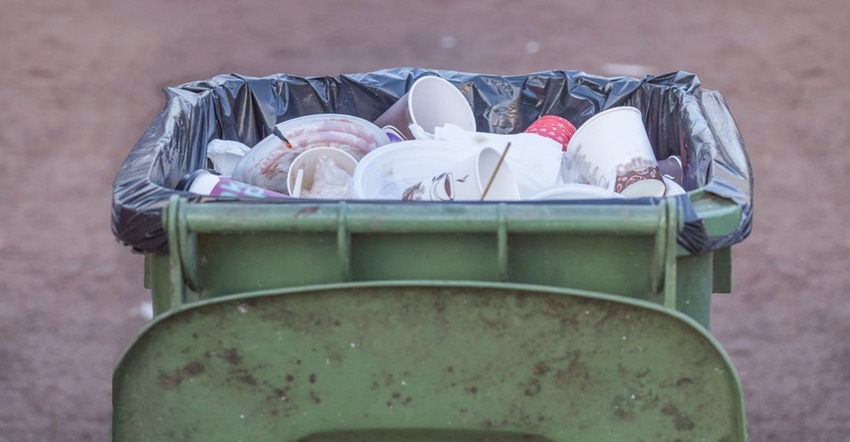
The Environmental Protection Agency released its Draft National Recycling Strategy in October 2020, setting the ambitious target to lead the United States to a 50% recycling rate.
Industry chatter quickly began with experts chiming in about whether or not the goal was achievable by 2030 and how the country would bolster infrastructure, education and avenues of innovation to progress the United States. The nation's recycling rate has hovered in mid-30% range since the 1990s.
"As a nation, we are blessed with abundant resources," Andrew Wheeler said during the announcement at the third annual America Recycles Summit. "And we all want to protect the value of those resources, so future generations can enjoy and benefit from them. We know that recycling is one of the most widely available ways to have a positive impact on the environment, from children in schools to families in the suburbs."
While the pandemic has slowed and perhaps set back some advancements in recycling, Nena Shaw, acting division director of the EPA's Resource Conservation and Sustainability Division, provided an update to WasteExpo attendees.
"We are at a unique moment where there are so many policy drivers coming into alignment to positively impact our work," Shaw explained. "Congress, industry nonprofits, the international community and the American public all want to see an improved recycling sector."
She continued, stating that state legislative action and congressional action is "aligning" with President Biden's priorities of reducing climate, reducing impacts on communities with environmental justice as a concern, providing good jobs, protecting public health, and relying on science.
Shaw noted that the EPA anticipates a final version of the National Recycling Strategy to be released some time during the summer 2021.
The 50% national recycling goal will "help governments make necessary changes to collection and sorting system and [the EPA] anticipates that it will help inform industry investment decisions."
Moving to new legislation, Shaw lauded the Save Our Seas 2.0 Act that was enacted in November 2020. She applauded the bipartisan congressional interest in the bill that provides the agency with the authorization to act on domestic recycling through new grant programs. However, "while we were provided authority to issue grants to fund improvements to local waste systems, we were not given funding for the grants, but that may change in [fiscal year] 2022," Shaw said.
The Biden administration received recognition for acknowledging the importance of enhancing the nation's recycling system. Because of this support, Shaw announced that the EPA is seeking $10 million from Congress to support solid waste infrastructure in the form of a recycling pilot grant program. The objective is to encourage innovation in the recycling industry, reduce greenhouse gas emissions and create jobs. Environmental justice is pivotal to the EPA's strategy, with an effective recycling system crucial to providing equitable opportunities and materials management strategies for all communities.
"While there are many benefits to recycling, we need to ensure that all communities can reap these benefits," Shaw explained. "It's important that we not disproportionately impact vulnerable communities and in that light, EPA is examining how we support an equitable society for all."
Shaw also discussed how recycling and climate change go hand-in-hand. The Biden Administration and EPA Administrator Michael Reagan placing both issues as priorities. Mining and processing natural resources accounts for 50% of global greenhouse gas emissions. While domestic and global resource consumption continue to increase, recycling keeps materials in the supply chain, decreasing habitat destruction and biodiversity loss associated with mining finite resources.
"The connections between materials usage, the economy and the environment underscored by sustainable materials management is critical to our nation's health and prosperity," Shaw said.
With that, the EPA has noted "several actions" that are needed in order to manage materials more sustainably and equitably. More conscious consumption and a greater focus on material reuse are integral to enhancing the U.S. recycling system and environmental impact.
Companies and innovators need to "design out" waste and design products to keep materials in the supply chain for "as long as possible." Innovations also need to cleaner and safer processing of materials. The markets for recycled commodities must be strengthened. Shaw cited the purchasing power of the federal government as one avenue.
"When governments and organizations purchase materials made from recycled content, we drive demand for recycled materials, and we make the system more economically viable," she commented.
Shaw acknowledged the variability in how recycling rates are calculated. The EPA is slated to release the methodology for calculating the national recycling rate later this year, along with a recycling measurement guide to assist local and state governments to standardize measures in material measurement to track progress against the national recycling goal.
The National Recycling Strategy will outline the actions needed to reach the recycling goal, keeping environmental justice and other concerns in mind.
"It is the first step in leading our nation to a more sustainable thriving economy with a protective focus on protecting public health for everyone, especially local communities," Shaw said.
The EPA anticipates working with stakeholders "across the value chain" to implement these actions, but support is needed.
"For this strategy to be successful, we need all entities from the federal state and local government to private industry and trade associations to make commitments and take action," Shaw said. "Implementing the actions in the strategy will help create a more viable recycling system, produce more jobs and reduce the impact on the environment while also protecting human health. In the coming months we'll see what happens with the infrastructure bill and the President's budget, but in any case, we know we are driving towards transformative change."
About the Author(s)
You May Also Like




